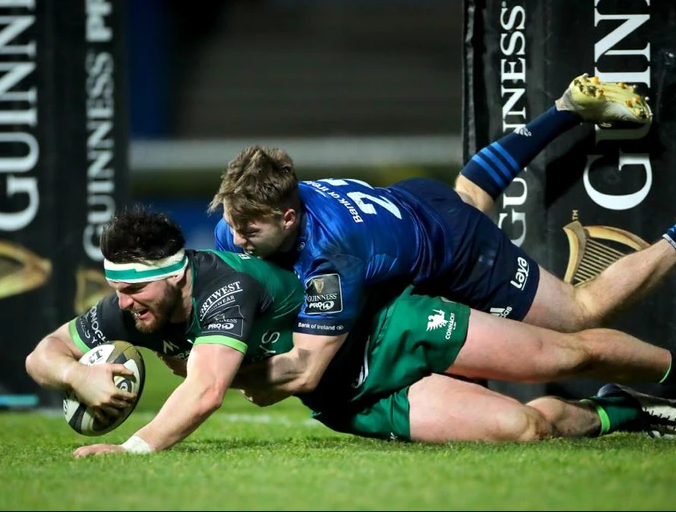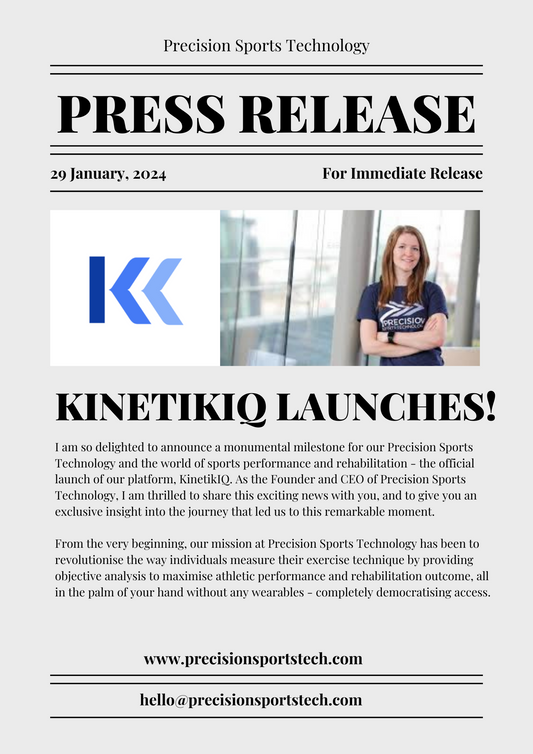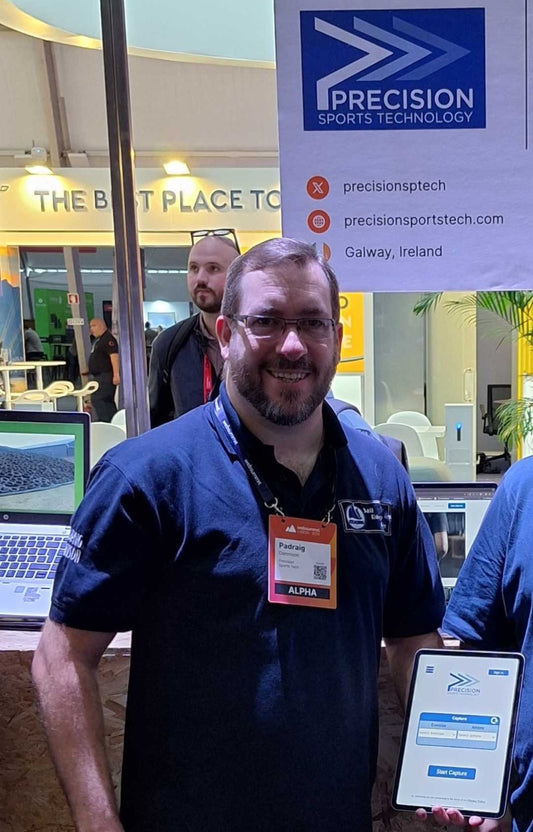Welcome to our exclusive 3-part Q&A series, where we dive deep into the world of professional rugby with none other than Tom Daly, the formidable force from Connacht Rugby. In Part 1, we explore the physical preparation that goes into being a rugby powerhouse and how movement screening as impacted Tom's career to date.

How has movement screening impacted your performance and overall game readiness as a professional rugby player?
Movement screening has become an important part of my daily schedule as a professional rugby player. The data and scores collected in our daily screenings allows the Strength and conditioning staff along with the physios to monitor the players reactions to training and game loads. It will highlight any deviations from your baseline scores and that will allow the staff to the further investigate the issues before a training day to reduce any risk of injury. Upon waking we will fill out a short subjective questionnaire on how we are feeling with regards stiffness, soreness, how we slept etc. Once we arrive at the training ground, we will complete 4 quick tests which will give the staff objective data on our movement each day. For me personally, movement screening allows me to really attack each training session with intensity as I know there is no underlying risk factors after being monitored each morning. If I do wake up with an issue, and flag it in my screening, I will always be assessed by a physio prior to training.
What specific movement screening tests or assessments do you undergo regularly, and how do they help identify potential areas of concern or weakness?
Each training day I will complete four tests. The sit and reach test which will test the extensibility of the hamstrings and lower back, the knee to wall test assesses ankle dorsiflexion range of motion, groin squeeze test using a sphygnamometer is used to monitor adductor strength and help flag any potential signs of groin pain which is common in field sports. I also complete a counter movement jump test two days a week to monitor my lower body power. These tests all play a key role in allowing the staff to monitor my readiness to train and help keep my risk of injuries low.

Movement screening is also very prominent in pre-season. We will complete strength and ROM tests at all major joints, and this will allow us to see any imbalances or major areas of weakness that can be worked on during pre-season and throughout the year. Overhead squat, single leg squat, straight leg raise are commonly used movement tests.
In what ways does movement screening contribute to injury prevention and reduce the risk of recurring injuries throughout your rugby career?
I’m now into my 10th season in professional rugby. As the years go on you get to know your own body quite well. During my academy years reduced ROM around my hip joints would have been flagged constantly in OH squat tests and physio assessments. This is something I have worked on throughout my career through prehab with physios, Pilates and yoga. I have also had 3 significant knee injuries in my career, I constantly keep an eye on my knee extension to ensure I have full range of motion and also ensure I am keeping on top of my quad and hamstring strength as these are the big stabilisers of the knee joint.
How do you and your team's coaching staff utilise the information from movement screening to tailor your training programs and address individual movement limitations?
In a contact sport like rugby, all players will have injuries and niggles throughout their career. It is very rare you will go into a match or training session feeling completely 100%, but it is the job of the medical staff, the S&C staff, and us as professionals to keep our bodies as close to that as possible. Each player will have their own prehab programme which will target areas of their bodies where they have weaknesses, imbalances or have a history of injury. These programmes are usually completed prior to field training to “switch on” the body. For me, it’s mostly hip on groin mobility and some quad activation. Everyone will be different, and some players need it more than others.
As a professional rugby player, how do you feel movement screening enhances your physical and mental preparation before important matches or competitions?
It allows me to go into training and games with a clear mind and allows me to focus solely on doing my job as a rugby player. Once I know my body is in peak condition there will be no hesitation in attacking a training session or game.
Can you share an example of how movement screening has alerted you to a particular physical issue that you were able to address and improve through targeted training and rehabilitation?
I ruptured my ACL in 2018 and had it surgically repaired. An ACL recovery typically takes 9 months, and I undertook 3D movement analysis screening every 3 months in Santry Sports clinic. This allowed me to see how my body was moving at different stages throughout the rehabilitation process. They analysed my gait, cutting mechanics, jumping and landing mechanics and allowed me to highlight any movement imbalances and weaknesses and ensured I focused my rehab on the correct areas.
Stay tuned for Part 2 and be among the first to experience the excitement of our beta trials. Join us on this thrilling journey as we uncover the secrets to success with Tom Daly!




